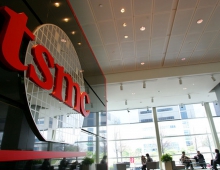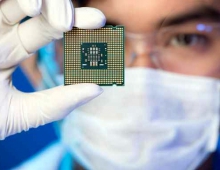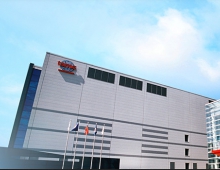
TSMC To Move in Bigger Wafers By 2015
Taiwan Semiconductor Manufacturing Company (TSMC) plans
to begin trial production on 18-inch (450mm) wafers in
the 2013-2014 timeframe, with volume production slated
for 2015-16, according to the chipmaker.
The foundry expects to have about 95% of its 18-inch
produciton equipment and facilities installed in 2014,
and start small-volume production on the larger wafers
in 2015, Digitimes.com reported today from Taiwan.
In the past, migration to the next larger wafer size traditionally began every 10 years after the last transition. For example, the industry began the transition to 300mm wafers in 2001, a decade after the initial 200mm manufacturing facilities (fabs) were introduced in 1991.
The transition to larger wafers is expected to enable growth of the semiconductor industry and help maintain a reasonable cost structure for future integrated circuit manufacturing and applications.
The bigger wafers help lower the production cost per chip. The total silicon surface area of a 450mm wafer and the number of printed die is more than twice that of a 300mm (12- inch) wafer. Additionally, through more efficient use of energy, water and other resources, bigger wafers can help diminish overall use of resources per chip. For example, the conversion from 200mm wafers to 300mm wafers helped reduce aggregate emissions per chip of air pollution, global warming gasses and water, and further reduction is expected with a transition to 450mm wafers.
However, moving on 18-inch fabs requires significant investments on new tools and equipment for the factories, meaning that equipment and material suppliers should help the foundry solve the current technical barriers.
TSMC has already revealed plans to conduct R&D for 14nm process technology starting 2012, and begin volume production on the node in 2015. It would use 18-inch wafers to process 14nm chips, the foundry noted.
In the past, migration to the next larger wafer size traditionally began every 10 years after the last transition. For example, the industry began the transition to 300mm wafers in 2001, a decade after the initial 200mm manufacturing facilities (fabs) were introduced in 1991.
The transition to larger wafers is expected to enable growth of the semiconductor industry and help maintain a reasonable cost structure for future integrated circuit manufacturing and applications.
The bigger wafers help lower the production cost per chip. The total silicon surface area of a 450mm wafer and the number of printed die is more than twice that of a 300mm (12- inch) wafer. Additionally, through more efficient use of energy, water and other resources, bigger wafers can help diminish overall use of resources per chip. For example, the conversion from 200mm wafers to 300mm wafers helped reduce aggregate emissions per chip of air pollution, global warming gasses and water, and further reduction is expected with a transition to 450mm wafers.
However, moving on 18-inch fabs requires significant investments on new tools and equipment for the factories, meaning that equipment and material suppliers should help the foundry solve the current technical barriers.
TSMC has already revealed plans to conduct R&D for 14nm process technology starting 2012, and begin volume production on the node in 2015. It would use 18-inch wafers to process 14nm chips, the foundry noted.





















